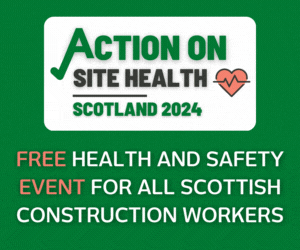Construction slump adds to Scotland’s economic woes

A dramatic increase in the percentage of Scottish construction firms showing advanced signs of financial distress in the second quarter of 2018 highlights the downturn being faced by the sector, according to the latest quarterly Red Flag Alert data released today by business rescue and recovery specialist Begbies Traynor.
From Apr to Jun 2018, there was a 300% rise in the number of construction businesses in Scotland in ‘critical’ distress (which refers to businesses that have had winding up petitions or decrees totalling more than £5,000 against them) compared with the previous quarter. This contrasts with a quarter on quarter rise in ‘critical’ distress in the construction sector of just 10% across the UK as a whole. Year on year, ‘critical distress’ in the sector rose by 18% in Scotland while it fell by 1% UK-wide.
Looking at early or ‘significant’ distress (which relates to businesses with minor decrees against them and those showing a marked deterioration in key financial ratios), the sector in Scotland appears to have steadied with no increase since quarter one, compared with a fall of 1% across the whole of the UK. Scottish construction companies saw a rise of 8% in this type of distress since the second quarter of 2017, compared with a 4% increase across the UK.
Ken Pattullo, who leads Begbies Traynor in Scotland, said: “These latest figures reinforce the slowdown in the construction sector which we have been seeing, borne out by the recent construction insolvencies here. The quarter on quarter increase in advanced or ‘critical’ distress is particularly stark, and doesn’t bode well either for construction firms or for the many other businesses, such as suppliers and sub-contractors, which depend on them.”
Looking at the wider economic picture, after a year of slowing growth in 2017, the pattern has continued into the second quarter of 2018 with Scotland seeing a year on year rise of 28% in ‘critical’ distress across all sectors, while the UK-wide figures fell by 7%. The latest Red Flag Alert data also revealed a massive rise of 77% in the number of Scottish businesses experiencing this type of distress since the previous quarter; this compares with an increase of just 10% nationally.
In terms of ‘significant’ distress, 24,905 businesses in Scotland showed signs of these less advanced financial problems compared with the same period the previous year. This represents a 9% increase in this type of distress in Scotland, a figure which was reflected across the UK as a whole. The picture was more positive when comparing data with Q1 2018, with companies in both Scotland and across the UK seeing a 1% fall in instances of ‘significant’ distress.
Sectors In Scotland experiencing the largest increases in ‘significant’ distress since the same period last year, included printing (7% rise); travel and tourism (4% rise); and leisure and cultural activities, and bars and restaurants (with 1% rise). In contrast, utilities and professional services both saw drops in ‘significant’ distress of 5%; financial services fell by 4%, food and drug retailing, manufacturing and support services all saw a 2% fall since Q2 2017.
“After a tough start to the year with a poor first quarter exacerbated by the ‘Beast from the East’, the economy appears to be starting to stabilise across many sectors, despite the lack of economic momentum which started in 2017. However, with continued uncertainty about the impact of Brexit, together with consumers feeling a squeeze on household incomes, showing no sign of abating, this lack of confidence is likely to keep the economy in the doldrums.
“Scottish businesses appear to be holding their own when compared with the rest of the UK in terms of early or significant distress, however, the country put in some worrying figures relating to instances of more serious distress with a 28% increase here year on year compared with a 7% fall across the UK as a whole.”
Mr Pattullo continued: “Despite a welcome boost from the royal wedding and some warmer weather in recent months, UK manufacturing growth has fallen since last year and as inflation continues to grow, there is increasing pressure to raise interest rates. With little hope of a resurgence for the economy in 2018, directors would be well advised to proceed with caution and prepare for tough times ahead.”





















